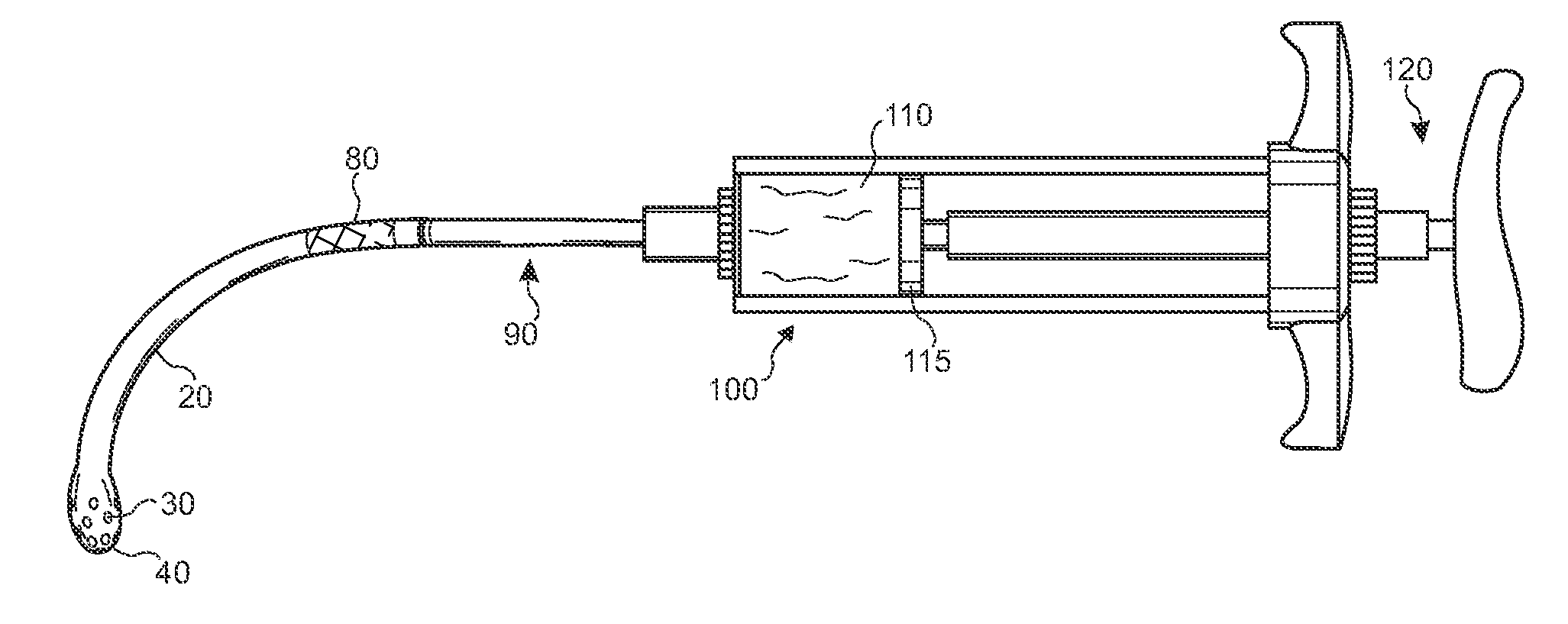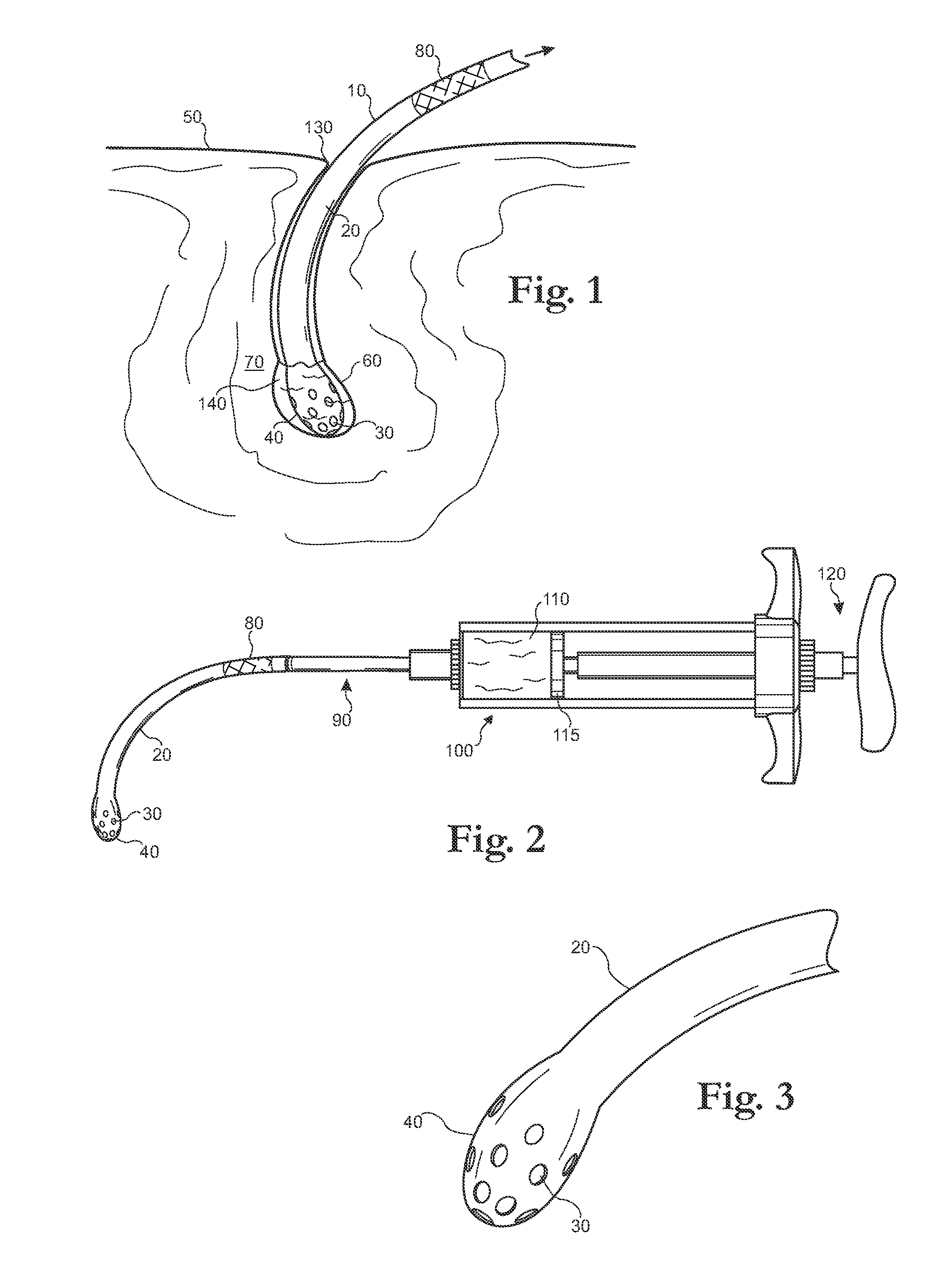Snake Venom Evacuation and Medication Injection Device
a technology of snake venom and medication, which is applied in the field of snake bite treatment, can solve the problems of snake bite injury, snake bite injury, and ineffectiveness of devices, and achieve the effect of minimizing tissue and nerve damage, and severe trauma to the affected area
- Summary
- Abstract
- Description
- Claims
- Application Information
AI Technical Summary
Benefits of technology
Problems solved by technology
Method used
Image
Examples
Embodiment Construction
[0018]By way of one example of many to serve as background in understanding the preferred embodiment of the present invention, as shown in FIG. 1, is a device for extracting snake venom 10 from a bite victim. The extracting device includes a hypodermic tube 20 for inserting into a human flesh wound and tissue 70. It is understood by those in the art that the device could work equally as well on animal bite wounds. The tube preferably comprises either a curved metal hypodermic needle or a plastic catheter. The tube 20 is integrated with a hollow bulbous tip 40 such that the tube 20 has a curvature that is similar to the curvature of a typical snake fang. Preferably, the tip 40 should be smooth and bulbous such that the diameter of the tip 40 may be greater than that of the tube 20. A grip 80 for holding the device 10 may be secured to, or integrated with the tube 20. By utilizing a tube 20 with a typical snake-fang-shaped curvature and a smooth bulbous tip 40, the tube 20 may penetra...
PUM
 Login to View More
Login to View More Abstract
Description
Claims
Application Information
 Login to View More
Login to View More - R&D
- Intellectual Property
- Life Sciences
- Materials
- Tech Scout
- Unparalleled Data Quality
- Higher Quality Content
- 60% Fewer Hallucinations
Browse by: Latest US Patents, China's latest patents, Technical Efficacy Thesaurus, Application Domain, Technology Topic, Popular Technical Reports.
© 2025 PatSnap. All rights reserved.Legal|Privacy policy|Modern Slavery Act Transparency Statement|Sitemap|About US| Contact US: help@patsnap.com


